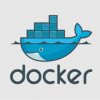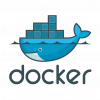Environment Management
Articles
 |
Leverage Containers to Create Simulated Test Environments on Demand Adopting service virtualization can allow organizations to achieve more effective software development and testing by removing traditional test environment bottlenecks. Integrating service virtualization within the continuous delivery pipeline using containerization helps teams reach the level of flexibility required by today's competitive markets. |
|
 |
Create an Agile DevOps Environment That Fosters Flexibility over Features When a company makes the move from software as a service (SaaS) to an API-first platform, a change in mindset is required. The successful transitions come from those who shift from features to flexibility. Technology teams should look to remove constraints and broaden the possibilities of their platform by constantly exploring ways to make their platform as flexible as possible. |
|
|
|
The Risks and Rewards of Adopting a Microservices Architecture in Your DevOps Enterprise Adopting microservices can be a great way to split up existing monolithic legacy applications in order to gain some flexibility and accelerate the development of new features. But the learning curve is steep, and you may need to make some sacrifices. Andrew Phillips outlines the potential impact this implementation can have on architecture and operations in an enterprise environment. |
|
 |
Considering Containers: Is Docker Right for You? Over the past few years, containers have emerged as possibly the most important trend in enterprise technology since the advent of hardware virtualization—and Docker is the most popular. But what do containers really do, and is adopting Docker the right move for your organization? Read on to find out. |
|
 |
The Potential—and Challenges—of Container-Based Deployment Containers are taking the virtualization model to greater heights by enabling a flexible way to programmatically provision the resources you need. New technology also means we need new processes and failsafes, though. Containers hold a great deal of promise, but are they really ready to be used in production environments? |
|
 |
Building Effective, Cross-Functional Integrated Product Teams Product development team members are often focused on the component level, but understanding the whole system is a challenge. Forming cross-disciplinary integrated product teams can provide support for large and small efforts in either agile or traditional development, helping teams achieve total system lifecycle expertise. |
|
 |
Where Did Configuration Management Go? Amid all the excitement of DevOps, continuous delivery, and the magic of single-push-button deploys, some folks have forgotten the prerequisites. You cannot implement continuous anything without effective configuration management. This article will help you reassess where you are and ensure that you have the basic building blocks in place to ensure success. |
|
 |
Smashing the Silos with Blended Analytics While significant progress has been made in leveraging analytics for better operational insights, today’s IT operations analytics solutions still operate in silos. To really reap the benefits and promise of analytics, IT decision-makers need to break these silos and apply an approach that combines many different major sources of information: blended analytics. |
|
 |
Seven Lessons You Learn When Growing Your Configuration Management When the number of employees, products, and releases you’re managing grows rapidly, that transformation introduces several challenges—and opportunities—in almost every aspect of configuration management. This article presents the major issues a company may face and the improvements you can make to processes and tools as a result. |
|
 |
Using Docker with Atlassian’s Bamboo for Better Continuous Integration Some projects built with Bamboo require the build system to have certain specialized software. Installing the software can become a problem when different projects require conflicting sets of software. To solve this, developers can create remote agents with different sets of software and run them all on the same machine with Docker. |
Pages
Recommended Web Seminars
| May 23 | How Generative AI Boosts Speed and Quality in Software Testing |
| On Demand | Building Confidence in Your Automation |
| On Demand | Leveraging Open Source Tools for DevSecOps |
| On Demand | Five Reasons Why Agile Isn't Working |
| On Demand | Building a Stellar Team |











